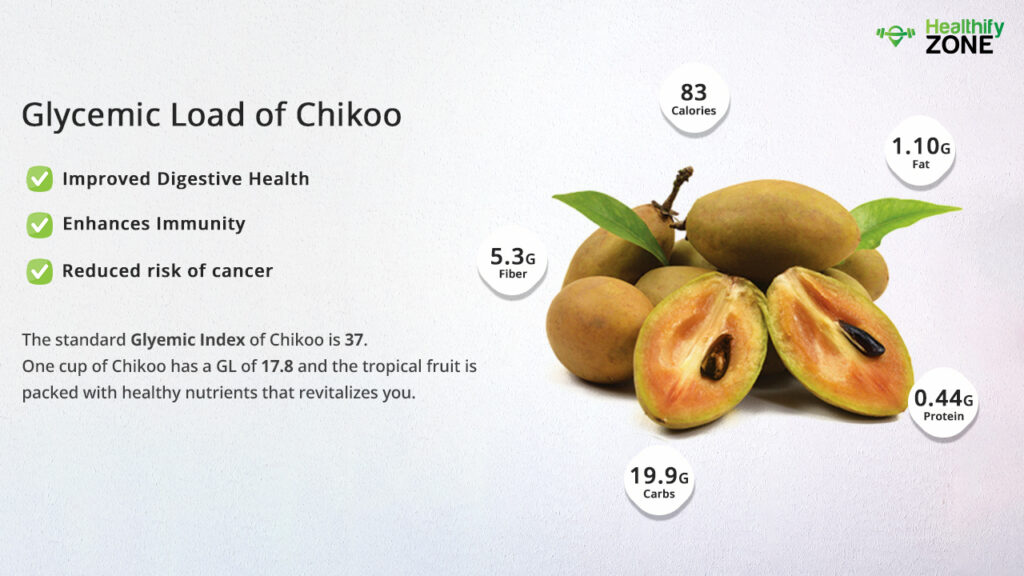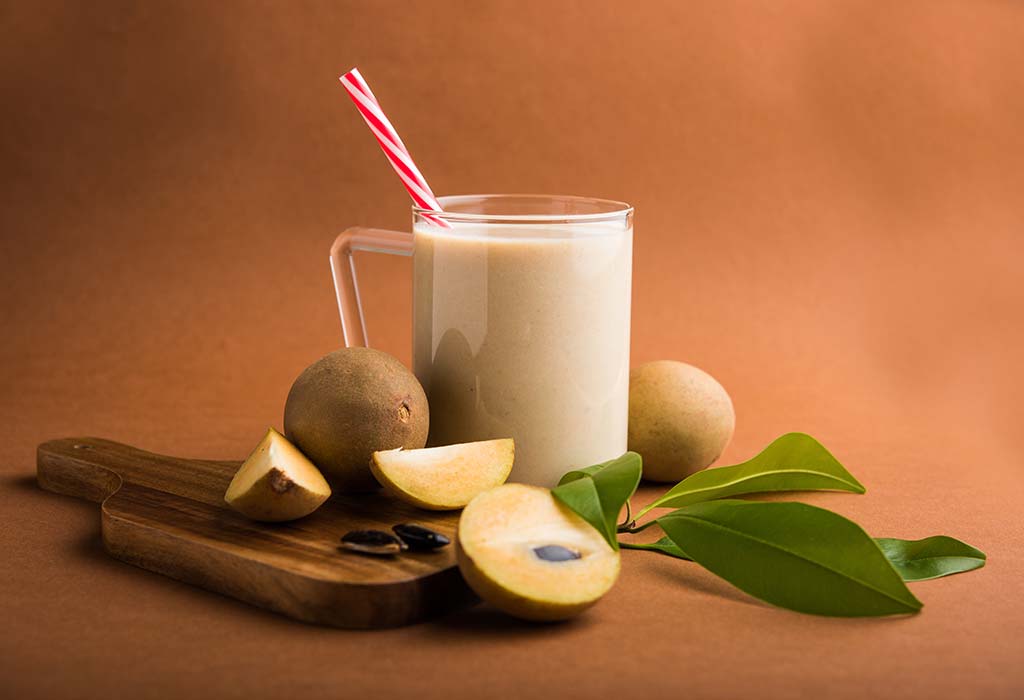The carbohydrate content of food with the pace with which it increases the blood glucose levels is called the Glycemic Load. A simple way of making healthier diet choices is following the Glycemic Index. It helps you compare alternative nutrient sources according to blood glucose levels. Glucose is the representation of a higher blood glucose response in comparison to fructose.
Chikoo is a sweet tropical fruit that has a myriad of nutritional benefits. The fruit has fructose and sucrose that brings a sweetness that revitalizes you. The ripe chikoo has a good amount of vitamins and minerals, like folic acid, niacin, pantothenic acid, potassium, copper, and iron. The International GI Tables have stated that Chikoo has a GI of 37.

Other than being packed with nutrients, Chikoo also has a load of health benefits.
- Folates
- Niacin
- Pantothenic Acid
- Pyridoxine
- Riboflavin
- Thiamine
- Vitamin A
- Vitamin C
- Sodium
- Potassium
- Calcium
- Copper
- Iron
- Magnesium
- Phosphorous
- Selenium
- Zinc
How to Calculate Glycemic Load of Chikoo, Sapodilla, or Sapota?
The standard Glycemic index of chikoo is 37. The high glycemic index of the fruit helps in reducing the risks related to cardiovascular diseases. If we want to talk about diet, the key to preventing diabetes or any chronic illness is to distribute the carbohydrate consumption content throughout the day and manage the sugar levels in the body correctly—however, the glycemic load for one cup of chopped chikoo is 17.8 and is an ideal fruit to be consumed before and after workouts.

The Formula/Procedure For Calculation of Glycemic Index of the Chikoo :
GL = GI * carbs / 100
where
- GL – glycemic load;
- GI – glycemic index;
- and carbs – the amount of carbohydrates in the portion.
| SL.NO | Chikoo, Sapodilla, or Sapota BY WEIGHT IN (g) | GLYCEMIC LOAD |
| 1. | 100 g of Chikoo, Sapodilla, or Sapota | 7.4 (low) |
| 2. | 250 g of Chikoo, Sapodilla, or Sapota | 18.5 (medium) |
| 3. | 500 g of Chikoo, Sapodilla, or Sapota | 37 (high) |
| 4. | 1 Kg of Chikoo, Sapodilla, or Sapota | 74 (very high) |
| 5. | One Whole Chikoo, Sapodilla, or Sapota | 8.9 (low) |
| 6. | 1 Cup of Chikoo, Sapodilla, or Sapota | 17.8 (medium) |
Is Chikoo, Sapodilla, or Sapota Safe to Consume If You Have Diabetes?
A recent study with Chikoo has shown that it significantly controls blood glucose levels. The extracts of its leaves and its pulp help reduce levels of glycaemia, insulin, leptin, cholesterol, and triglycerides, and a high amount of high-density lipids. Anyone with diabetes can definitely consume chikoo. They can have about 200 g of chikoo in one serving without it affecting your blood glucose levels.
Can I Eat Chikoo, Sapodilla, or Sapota During a Fat-Loss Diet?
Chikoo has been shown to decrease weight gain, and hence, is an excellent fruit to consume during a fat-loss diet. You can consume 200 g of chikoo in one serving.

- A 200 g serving of chikoo has a GL of 14.8 which is in the permissible levels.
- Chikoo as a salad ingredient is premissible in a fat-loss diet.
Can I Eat Chikoo, Sapodilla, or Sapota During a Low-Carbohydrate Diet?
You can eat have chikoo during a strict low-carb diet. However, the portion size of a chikoo is something that you need to take into account. We suggest you not consume more than 50 g of chikoo per serving.
Is Chikoo, Sapodilla, or Sapota High in Sugar?
100 g of Chikoo has 20 g of carbs and 6 g of sugar. Although it does not seem to be high in traditional sugar, it is high in carbs, which will eventually burn down into sugar. It is high in calories too. The fruit is used majorly for medicinal purposes, to treat coughs and colds, and is an antibiotic.